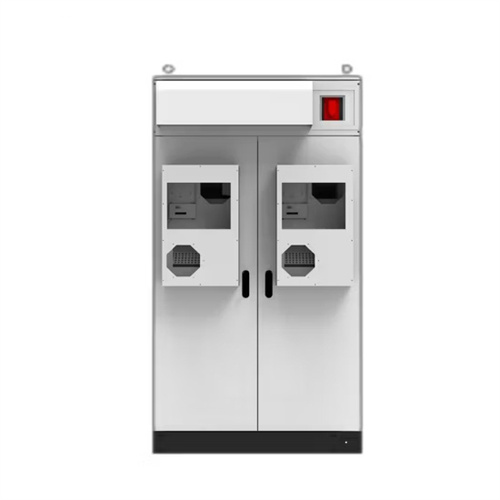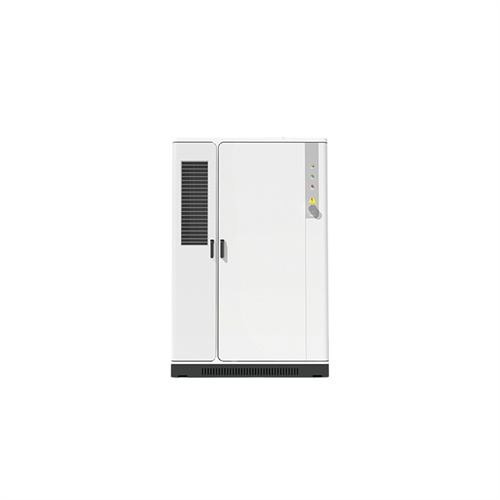BATTERY RECYCLING

Energy storage battery cooling system manufacturers
Self-Sufficiency– Battery energy storage systems aren’t simply appealing to renewable energy providers. Forward-thinking enterprises are also adopting them. Energy purchased during off-peak hours can be stored using battery storage systems. It can be activated to distribute electricity when tariffs are at their. . Installing BESS necessitates a significant capital outlay – Due to their high energy density and enhanced performance, battery energy storage. [pdf]FAQS about Energy storage battery cooling system manufacturers
Who is energy storage redefined?
Energy Storage Redefined. British Energy Storage Manufacturers of the most flexible energy storage solution on or off the grid. Here at Multi Source Power our team of experts design, build, and deliver Battery Energy Storage Systems for both on- and off-grid applications.
What is battery energy storage?
Battery energy storage (BESS) offer highly efficient and cost-effective energy storage solutions. BESS can be used to balance the electric grid, provide backup power and improve grid stability.
Who delivers 10MW battery energy storage project?
Edina delivers 10MW battery energy storage project for infrastructure developer ForePower. Microgrid / Hybrid co-location solution delivers energy security and sustainability for UK commercial food waste management company. Are you looking to deploy Battery Energy Storage Systems?
Can a battery energy storage system fit a closed-loop air conditioner?
A leading manufacturer of battery energy storage systems contacted Kooltronic for a thermal management solution to fit its rechargeable power system. Working collaboratively with the manufacturer, Kooltronic engineers modified a closed-loop air conditioner to fit the enclosure, cool the battery compartment, and maximize system reliability.
Why should you buy a specialized enclosure air conditioner from Kooltronic?
A specialized enclosure air conditioner from Kooltronic can help extend the lifespan of battery energy storage systems and improve the efficiency and reliability of associated electronic components. Without thermal management, batteries and other energy storage system components may overheat and eventually malfunction.
Are lithium-ion batteries a good energy storage solution?
There are different energy storage solutions available today, but lithium-ion batteries are currently the technology of choice due to their cost-effectiveness and high efficiency. Battery Energy Storage Systems, or BESS, are rechargeable batteries that can store energy from different sources and discharge it when needed.

What size photovoltaic panel is best for a 6 volt battery
To find out what size solar panel you need to charge your battery, you’ll need to enter the following info into our solar panel size calculator at the top of this page: 1. Battery Voltage (V):What is your battery’s voltage? 2. Battery Amp Hours (Ah): What is your battery’s capacity in amp hours? (If you only know its capacity in watt. . 12 volt batteries are the most common voltage I see people using in their solar power setups. Here is a chart showing what size solar panel you need to charge 12V batteries of various capacities in 5 peak sun hours with an. . 12V 100Ah batteries are some of the most common in solar power systems. Here are some tables with the solar panel sizes you need to charge them at various speeds: . Because lead acid batteries only have 50% usable capacity, 200Ah lead acid batteries have as much usable capacity as 100Ah lithium iron phosphate batteries. . The 12V 50Ah battery is another common battery size in solar power systems. Some car batteries are also 50Ah. Because lead acid batteries only have 50% usable capacity, a 50Ah LiFePO4 battery has as much usable capacity as a. [pdf]
Market demand for lithium battery energy storage
Global demand for Li-ion batteries is expected to soar over the next decade, with the number of GWh required increasing from about 700 GWh in 2022 to around 4.7 TWh by 2030 (Exhibit 1). Batteries for mobility applications, such as electric vehicles (EVs), will account for the vast bulk of demand in 2030—about 4,300 GWh; an. . The global battery value chain, like others within industrial manufacturing, faces significant environmental, social, and governance (ESG). . Some recent advances in battery technologies include increased cell energy density, new active material chemistries such as solid-state batteries, and cell and packaging production technologies, including electrode dry. . Battery manufacturers may find new opportunities in recycling as the market matures. Companies could create a closed-loop, domestic supply chain that involves the collection,. . The 2030 Outlook for the battery value chain depends on three interdependent elements (Exhibit 12): 1. Supply-chain resilience. A resilient battery value chain is one that is regionalized. We tracked 30 battery markets in major regions and found that in 2022 the world will consume or demand 420 GWh of Li -ion batteries for all applications. By 2030 that will rise to 2,722 GWh. [pdf]FAQS about Market demand for lithium battery energy storage
How will rising demand for lithium-ion batteries affect the battery industry?
Rising demand for substitutes, including sodium nickel chloride batteries, lithium-air flow batteries, lead acid batteries, and solid-state batteries, in electric vehicles, energy storage, and consumer electronics is expected to restrain the growth of the lithium-ion battery industry over the forecast period.
How big is the lithium-ion battery market?
The lithium-ion battery market is expected to reach $446.85 billion by 2032, driven by electric vehicles and energy storage demand. Report provides market growth and trends from 2019 to 2032, with a regional, industry segments & key companies an
What percentage of lithium-ion batteries are used in the energy sector?
Despite the continuing use of lithium-ion batteries in billions of personal devices in the world, the energy sector now accounts for over 90% of annual lithium-ion battery demand. This is up from 50% for the energy sector in 2016, when the total lithium-ion battery market was 10-times smaller.
What is the global market for lithium-ion batteries?
The global market for Lithium-ion batteries is expanding rapidly. We take a closer look at new value chain solutions that can help meet the growing demand.
Why did automotive lithium-ion battery demand increase 65% in 2022?
Automotive lithium-ion (Li-ion) battery demand increased by about 65% to 550 GWh in 2022, from about 330 GWh in 2021, primarily as a result of growth in electric passenger car sales, with new registrations increasing by 55% in 2022 relative to 2021.
How many batteries are used in the energy sector in 2023?
The total volume of batteries used in the energy sector was over 2 400 gigawatt-hours (GWh) in 2023, a fourfold increase from 2020. In the past five years, over 2 000 GWh of lithium-ion battery capacity has been added worldwide, powering 40 million electric vehicles and thousands of battery storage projects.